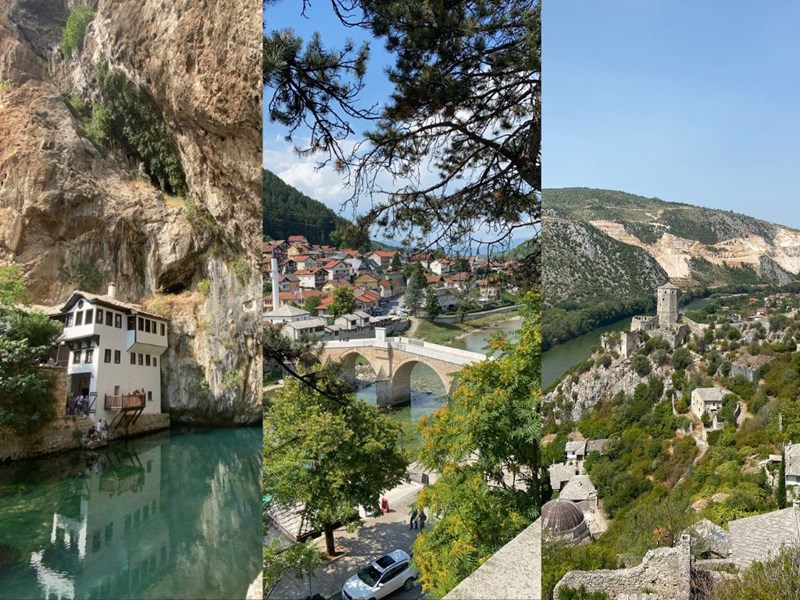Tracing Ottoman heritage in Bosnia-Herzegovina

The route that traces Ottoman heritage down south from the capital city following the Neretva River.
The first small village is Konjic, which took its present form during the Ottoman period and welcomes you with its stone bridge over the Neretva River. You can explore this small village, the bridge, and its surroundings in a short time on foot.
The stone bridge, known as Stara Cuprija, or Old Stone Bridge, was damaged during World War II. Later, with the restorations made in accordance with its original design, the bridge took on the look it has today. Besides the bridge, you can also go a little further south to visit Tito's nuclear bunker where you can find D-0 ARK Underground, hosting contemporary art.
Continuing toward the south, you can continue the journey to check out Blagay Lodge, which is also an Ottoman heritage site.
Blagaj Tekkesi, also known as the "Alperenler Tekkesi," is located in the town of Blagaj in Bosnia-Herzegovina, 15 kilometers from Mostar – tekke is a term for monasteries of Islamic dervishes.
Blagaj Tekkesi is located at the birthplace of the Buna River, a tributary of the Neretva River, which also passes under the Mostar Bridge.
Although there are different rumors about the establishment of the Blagaj Lodge next to the water source, it is said that an Anatolian dervish named Sarı Saltuk and allergens – Turkish warriors – came here and founded the tekke before the Ottomans.
The tekke, which was built next to a cave from where the Buna River springs, in the 15th century, also played a very important role in the Bosnians' conversion to Islam. It is said that Evliya Çelebi, a 17th-century Ottoman explorer, also visited the tekke while the people were living in it and added spiritual strength to the region for years.
Today, in the tekke, ashura is cooked and distributed in large cauldrons during the month of Ashura, an Islamic holiday with a sweet with the same name.
At the same time, special programs are held every year on the second Friday of May and on the night of May 28 to commemorate Ottoman Sultan Mehmed II.
There is also a mausoleum belonging to Sarı Saltuk and Şeyh Açıkbaş in the three-story wooden tekke, which consists of prayer rooms, a guesthouse, a bathhouse, a kitchen, an inner courtyard, and an ablution room.
After visiting the tekke, the next stop is the village of Pocitelj, which also carries traces of the Ottoman Empire.
This village, which houses historical buildings from the Ottoman Empire, resembles an Anatolian settlement. It is also on the UNESCO World Heritage List.
When the border village was taken by the Ottomans, its castle was enlarged, and a defensive stone city was built near the castle. From the castle, you can observe the fascinating view of the Neretva River and the village made up of stone structures. Pocitelj suffered heavy damage due to the war that affected Bosnia between 1992-1995 and was later rebuilt.
Contact
Džemal Bijedić University of Mostar
University Campus
88104, Mostar
Bosnia and Herzegovina
Phone: +387 36 570 790
eMail: international[@]unmo[.]ba

